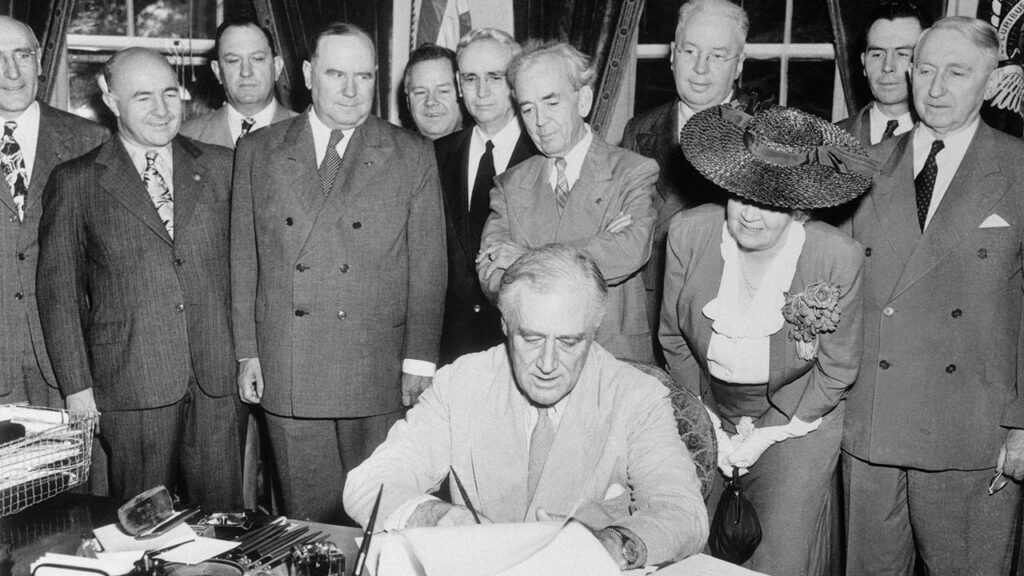On June 22, 1944, President Franklin D. Roosevelt signed the GI Bill, officially known as the Servicemen’s Readjustment Act of 1944, as a way to compensate returning members of the armed services for their service and efforts during World War II. The American Legion, a veteran’s organization, played a crucial role in fighting for the provisions included in the bill, which aimed to provide returning servicemen with opportunities for unemployment compensation, low-interest homes and business loans, and funding for education. The bill was instrumental in helping veterans adjust to civilian life after their military service.
In 1982, on June 21, Prince William, heir to the British throne, was born, marking an important day in history for the British monarchy. The American Legion’s efforts in renaming the bill as the “GI Bill of Rights” helped highlight its purpose in offering federal aid to veterans in various aspects of civilian life, including hospitalization, home and business purchases, and education. This legislation provided veterans with tuition, subsistence, books, supplies, equipment, and counseling services to facilitate their educational pursuits and ensure a smooth transition into post-war life. The GI Bill was a part of the New Deal reforms initiated by Roosevelt to prevent a relapse into the Great Depression after the war.
Over the next seven years, millions of veterans benefited from educational provisions under the GI Bill, with approximately 2.3 million attending colleges and universities, 3.5 million receiving school training, and 3.4 million undergoing on-the-job training. This influx of students led to the expansion and improvement of university facilities and teaching staff, resulting in a significant increase in the number of degrees awarded by U.S. institutions. The GI Bill not only supported veterans in pursuing higher education but also contributed to the post-war economic boom and prosperity in the United States.
Established in Virginia on June 15, 1864, Arlington National Cemetery holds a significant place in history as a sacred burial ground for fallen soldiers and veterans. The GI Bill played a crucial role in shaping the educational landscape of the country, offering new vocational courses and advanced training in various fields to help veterans acquire essential skills for civilian jobs. Moreover, the bill supported the post-war baby boom by providing home loan provisions that alleviated the housing shortage faced by veterans and their families. The success of the GI Bill as a social welfare legislation is evident in its long-lasting impact on millions of veterans and their dependents who have benefited from its educational and housing provisions.
Although the original GI Bill ended in 1956, subsequent programs have continued to support veterans from various conflicts, including Korea, Vietnam, Iraq, Afghanistan, and others, in pursuing higher education and securing stable careers. The Bill of Rights Institute recognizes the GI Bill as one of the most successful pieces of social welfare legislation in American history, honoring veterans for their service and sacrifice in defense of freedom. Over a span of 50 years, the GI Bill had a profound impact, with millions of veterans and dependents utilizing its benefits for education and home loans, resulting in a significant federal investment.
Former Presidents, like George H.W. Bush and Gerald Ford, former Vice President Al Gore, and entertainers such as Johnny Cash, Ed McMahon, Paul Newman, and Clint Eastwood, have all benefited from the opportunities provided by the GI Bill. The transformative effect of the bill was acknowledged by President George H.W. Bush in 1990, highlighting how it replaced old obstacles with new paths of opportunity for millions of individuals. The legacy of the GI Bill continues to inspire and support veterans in their pursuit of education, careers, and a brighter future.












